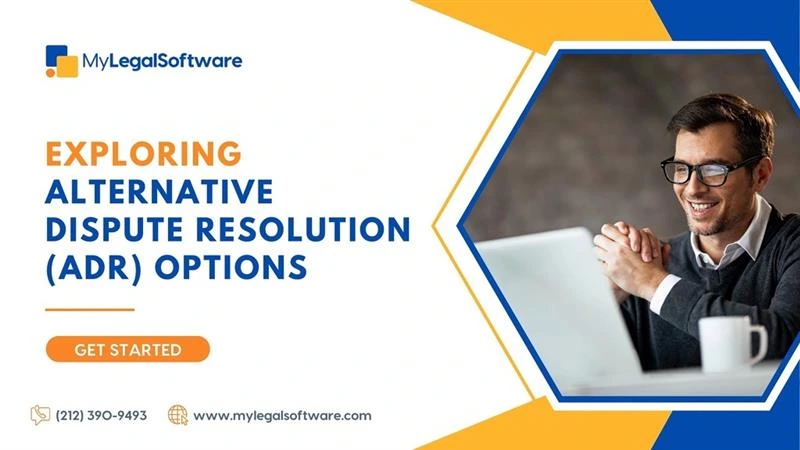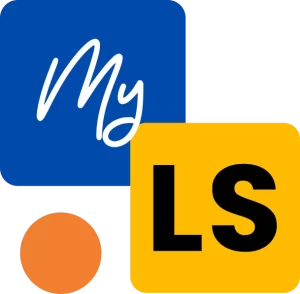Exploring Alternative Dispute Resolution (ADR) Options
When it comes to legal conflicts, most of us imagine those intense courtroom scenes from TV dramas—people arguing, lawyers debating, and the judge handing down a final decision. But, in reality, most cases don’t go that far. There are multiple ways to solve disputes without anyone stepping into a courtroom. This approach is called Alternative Dispute Resolution (ADR), and it’s changing the game for how conflicts are handled.
In this post, we’ll break down ADR methods in a simple, friendly way, from mediation to arbitration, and talk about how case management software like My Legal Software can make the whole process easier and more organized.
What’s the Big Idea Behind Alternative Dispute Resolution?
Simply put, Alternative Dispute Resolution (ADR) offers alternatives to the formal court process. Think of it as finding a solution in a more flexible, less confrontational way. ADR is designed to help parties work things out by focusing on collaboration rather than confrontation. It’s often faster, more private, and can even be less expensive. Plus, it gives people a way to resolve things without burning bridges—a real bonus if they need to keep working together afterward.
Why ADR is Becoming So Popular
Let’s face it: going to court isn’t always ideal. It can be time consuming, and the costs can pile up quickly. With ADR, you can skip some of the formalities and get straight to the heart of the matter. ADR is designed to find practical solutions, especially in cases where there’s room for compromise. And because ADR lets people stay more in control of the outcome, it’s less about “winning” and more about reaching a solution that works for everyone involved.
Different Types of ADR: A Look at Mediation, Arbitration, and More
Now, let’s take a closer look at the most popular ADR methods—mediation and arbitration—as well as a few others you might not have heard of.
- Mediation: Think of It as Guided Problem Solving
Mediation is a bit like having a conversation with a helpful referee. In mediation, a neutral third party, called the mediator, steps in to guide both sides as they work toward a solution. The mediator doesn’t make any decisions—they’re just there to help everyone communicate more effectively and reach an agreement.
- How It Works: First, the mediator listens to each side’s story to understand what each party wants and why. Then, they bring both sides together to talk things over, exploring options and possible compromises.
- Why People Like Mediation: It’s informal, collaborative, and especially helpful when the people involved need to maintain a positive relationship, like in family or workplace situations.
- Challenges: For mediation to work, both sides need to be open to compromise. If one party isn’t willing to budge, mediation can stall and lead to the need for a more structured approach.
Arbitration: The “Less Formal Trial”
Arbitration is a little closer to what you’d see in court, but a more flexible alternative. Instead of a judge, you have an arbitrator—a neutral decision-maker who listens to both sides and then makes a ruling. Arbitration is often quicker and cheaper than going to court, but the outcome is usually binding, meaning you can’t change it once the arbitrator decides.
- How Arbitration Works: Each side presents their case, the arbitrator reviews everything, and then makes a final decision.
- Benefits of Arbitration: It’s structured enough to feel like a formal resolution, but it doesn’t drag out like a court case. For many, it’s a “best of both worlds” situation.
- Challenges: Since most arbitration decisions are binding, if someone disagrees with the result, they have very limited options to appeal.
Other ADR Methods Worth Knowing
Beyond mediation and arbitration, ADR offers even more ways to work things out:
- Negotiation: This one’s the simplest—just the two parties, sometimes with lawyers, talking it out and trying to reach an agreement.
- Collaborative Law: Often used in family law, this approach involves each party’s lawyer working together (rather than against each other) to reach a cooperative resolution.
- Neutral Evaluation: Here, a neutral evaluator listens to both sides and offers an unbiased opinion about each side’s strengths and weaknesses. This can help the parties decide if they want to keep negotiating or go a different route.
How Case Management Software Helps Streamline ADR
Even though ADR is simpler than going to court, there are still details to manage: documents, schedules, and a lot of back-and-forth communication. That’s where case management software, like MyLegalSoftware, can be a game-changer.
How Case Management Software Supports ADR:
- All Your Documents in One Place: With case management software, you don’t have to search through emails and folders to find what you need. It keeps all the files, notes, and updates in one place for everyone involved.
- Task Management and Tracking: The software lets you assign tasks, set deadlines, and see how things are moving along. This helps everyone stay on track, especially in ADR where time matters.
- Communication Made Simple: Many case management tools include messaging systems, so parties and their representatives can talk, share updates, and stay connected throughout the ADR process.
- Automatic Reminders: Forgetting deadlines or important meetings? Not with case management software. It’ll remind you of what’s coming up, keeping everyone in the loop.
With My Legal Software, ADR becomes even easier, letting everyone involved focus on resolving the dispute instead of worrying about logistics.
Choosing the Right ADR Option for Your Case
Every dispute is different, and choosing the right ADR method depends on factors like the relationship between the parties, how complex the issues are, and how quickly they need to reach a resolution.
- Mediation: Great for situations where compromise is possible and both parties are willing to talk things out.
- Arbitration: Perfect for cases that need a clear, binding decision without the drawn-out drama of a trial.
- Negotiation: Best for situations where the parties feel comfortable talking directly to each other, sometimes with lawyers involved.
ADR in Real Life: Examples Across Different Fields
ADR isn’t just for legal TV dramas—it’s used in the real world all the time:
- Family Law: Mediation is often used in divorce and child custody cases, allowing families to make decisions together rather than letting the courts decide.
- Workplace Conflicts: Arbitration is common for resolving issues like discrimination or wrongful termination without needing a full-scale lawsuit.
- Business Disputes: Many business contracts include ADR clauses, where both sides agree to use mediation or arbitration if a disagreement comes up. It keeps the issue out of court, saving everyone time and stress.
Conclusion – Alternative Dispute Resolution
Alternative Dispute Resolution (ADR) methods like mediation, arbitration, and negotiation offer a flexible, efficient, and often more comfortable way to handle disputes. If you’re looking to simplify the ADR process for your legal practice or for your clients, My Legal Software can help by organizing tasks, streamlining communication, and keeping all your important information in one easy-to-access place.
Want to make ADR even easier? Check out My Legal Software and discover how our case management tools can help you stay organized and focused on finding the best solution.
Want to know How to Handle Difficult Clients in Immigration Cases? Go here.
Frequently Asked Questions – Alternative Dispute Resolution
- What’s the difference between mediation and arbitration?
Mediation is all about working together to find a solution with the help of a neutral mediator, while arbitration involves an arbitrator making a binding decision after hearing both sides’ arguments.
- Are ADR decisions legally binding?
It depends on the method. Mediation agreements can be binding if turned into a contract, but arbitration rulings are usually binding and enforceable.
- Can ADR be used for any kind of dispute?
While ADR works for many types of cases, like family, business, and workplace conflicts, it’s not ideal for criminal cases or certain public policy matters. It’s best to check with a legal professional to see if ADR is a good fit for your situation.








